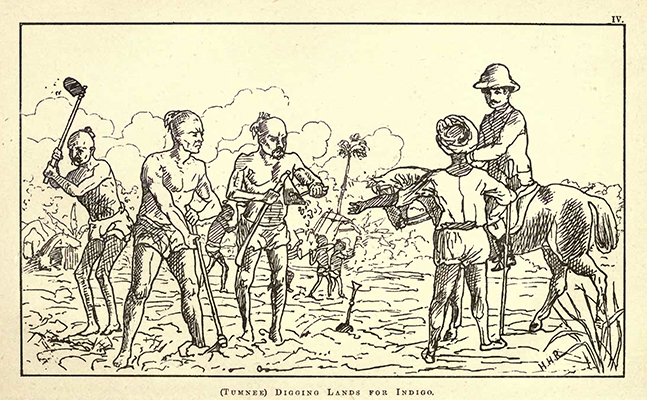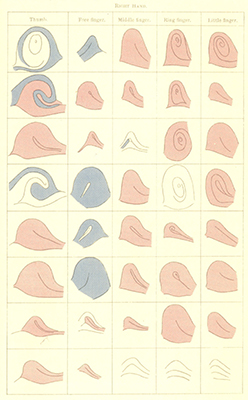The Manufacture of Indigo and the Origins of Fingerprinting in India
Up to the 17th century Europe’s supply of indigo, mainly came from India. In 1778-1779, the British East India Company declared free trading and cultivation of indigo across the province of Bengal and other parts of the country. This led to the rapid spread of settler culture and forced labour, followed by several cases of extreme violence as well as rioting.
The Indigo Revolt in Bengal (1859-1861) and Mahatma Gandhi’s Champaran Satyagraha (non-violent resistance of peasant-workers on indigo and opium plantations) in 1917-18, remain key moments in the Indian Independence movement as well as the history of peasants’ revolt.
This history of indigo plantations and manufacturing in Bengal (Eastern India) is closely associated with the origins of fingerprinting. In 1858, W. J. Herschel, an administrator in the East India Company, used fingerprinting for the first time in Bengal to secure an agreement with a local contractor. Soon, more samples and demonstrations of his technique became widely used to collect evidence in the aftermath of the Indigo Revolt (1859 – 1861). In the following decade, fingerprinting was implemented within the colonial Administrative and Juridical Services across India. Through Herschel’s findings, Dactylography (the scientific study of fingerprints) was further developed for the Forensic field by Francis Galton and Henry Faulds in England.
While the use of natural indigo is rare in contemporary textile traditions, chemical indigo is in common use as a fundamental constituent for block-printing and hand-dyed textile practices. Especially in the Ajrakh tradition (textile display), which is active in parts of Western India and Pakistan.

